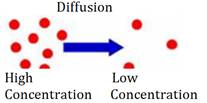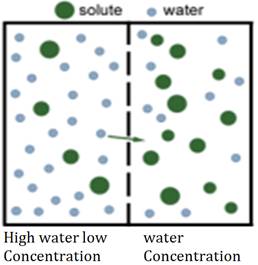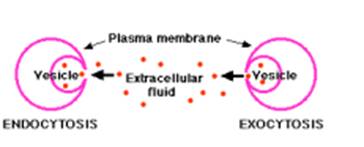
myCBSEguide App
Download the app to get CBSE Sample Papers 2024-25, NCERT Solutions (Revised), Most Important Questions, Previous Year Question Bank, Mock Tests, and Detailed Notes.
Install NowCBSE class 9 Science Chapter 5 The Fundamental Unit of Life notes in PDF are available for free download in myCBSEguide mobile app. The best app for CBSE students now provides The Fundamental Unit of Life class 9 Notes latest chapter wise notes for quick preparation of CBSE exams and school based annual examinations. Class 9 Science notes on Chapter 5 The Fundamental Unit of Life are also available for download in CBSE Guide website.
CBSE Guide The Fundamental Unit of Life class 9 Notes
CBSE guide notes are the comprehensive notes which covers the latest syllabus of CBSE and NCERT. It includes all the topics given in NCERT class 9 Science text book. Users can download CBSE guide quick revision notes from myCBSEguide mobile app and my CBSE guide website.
9 Science notes Chapter 5 The Fundamental Unit of Life
Download CBSE class 9th revision notes for Chapter 5 The Fundamental Unit of Life in PDF format for free. Download revision notes for The Fundamental Unit of Life class 9 Notes and score high in exams. These are the The Fundamental Unit of Life class 9 Notes prepared by team of expert teachers. The revision notes help you revise the whole chapter in minutes. Revising notes in exam days is on of the best tips recommended by teachers during exam days.
Download Revision Notes as PDF
CBSE Class 9 Science
Revision Notes
CHAPTER – 5
The Fundamental Unit of Life
1. All the living organisms are made up of fundamental unit of life called “ cell”.
2. The cell is a Latin word for “a little room”.
3. The scientist Robert Hooke saw a little room in the cork (the bark of a tree) resembled the structure of a honeycomb. The use of the word “Cell” to describe these units is used till this day in Biology as” Cell Biology”.
4. The Compound Microscope consist eye piece,objective lens and condenser to observe a cell after putting a drop of Safranin (for plant cell) and methylene blue (for animal cell).
5. The scientist Leeuwenhoek saw free living cells in the pond water for the first time.
(father of microbiology)
6. The scientist Robert Brown discovered the nucleus in the cell.
7. The cell theory states that all the plants and animals are composed of cells, it was proposed by Schleiden and Schwann.
8. The cell theory was further expanded by Virchow by suggesting that “all cells arise from the pre-existing cells”.
9. The cells differ in size, shape, structure (Please refer to Fig. 5.2/5.3: Onion peel/Various cells in Human body, NCERT Book Page-57/58): Types of cells: Onion cells, Smooth muscle cell, Blood cells, Bone cell, Fat cell, Nerve cell, Ovum, Sperm etc. Each kind of cell performs specific function.
10. A single cell may constitute a whole organism as in Amoeba, Chlamydomonas, Paramecium and Bacteria; these are called as unicellular organisms. Whereas in multi-cellular organisms (Human beings) division of labor is seen.
11. The feature in almost every cell is same: Plasma membrane, nucleus and cytoplasm.
12. Plasma membrane: It is the outermost covering of the cell.
- It is called as selective permeable membrane (because it prevents movement of some materials).
- It helps in diffusion and osmosis
- Diffusion: movement of substance from high concentration to low concentration.
Eg; exchange of carbon dioxide or oxygen with external environment.

Osmosis: it is the passage of water from the region of high water concentration to a region of low water concentration through a selective permeable membrane.

a) The cell gains water, if the medium surrounding the cell has a higher water concentration (Hypotonic solution) than the cell.
b) The cell maintains the same water concentration as the cell (Isotonic solution), water crosses the cell membrane in both directions.
c) The cell loses water, if the medium has lower water concentration (Hypertonic solution) than the cell.
Note – The cell drinking is endosmosis;
omission of water is called ex-osmosis.

13. The cell engulfs food is called endocytosis and ejects solid is called exocytosis. Amoeba acquires food through endocytosis and excretion of solid is called exocytosis.
14. The cell wall is a rigid outer covering composed of cellulose. It provides structural strength to plant cells. When a living cell loses water, there is shrinkage of contents of a cell away from the cell wall. This phenomenon is called as plasmolysis. The cell walls permit the cells of plants, fungi and bacteria to withstand very dilute (Hypotonic) external media without bursting.
15. The Nucleus: It is a dark colored, spherical or oval, dot-like structure near the center of a cell called Nucleus. The nucleus plays a central role in cellular activities/reproduction. The chromatin material gets organized into chromosomes. The chromosomes containinformation for inheritance of features from parents to next generations in the form of DNA (Deoxyribo Nucleic Acid ) and protein molecules. The functional segments of DNA are called genes.
16. In some organisms like Bacteria nucleus is not covered by nuclear membrane. Hence it is called as prokaryote. (Pro= primitive; karyote = karyon = nucleus.) The organisms with cells having a nuclear membrane are called eukaryotes.
17. Differences between prokaryotes and eukaryotes
| Prokaryotes | Eukaryotes |
| Size: generally small (1-10 µm) | Size: generally large. (5-500 µm) |
| Nuclear region: Not well defined and not surrounded by a nuclear membrane & known as nucleoids. | Nuclear region: Well defined and surrounded by a nuclear membrane |
| Chromosome: Single | Chromosome: More than one Chromosome |
| Membrane-bound cell organellesAbsent | Membrane-bound cell organellespresent |
| Eg- bacteria, blue green algae | Eg fungi, plant cell and animal cell. |
18. Cell organelles: Every cell has fluid matrix (other than nucleus) is called cytoplasm. The nucleus and cytoplasm is together called as protoplasm. The protoplasm term was coined by Purkinje. It has important cell organelles: Endoplasmic Reticulum (ER), Golgi apparatus, Lysosomes, Mitochondria, Plastids, and vacuoles.
19. Endoplasmic Reticulum (ER): It is a large network of membrane –bound tubules and vesicles.
- There are two types of Endoplasmic Reticulum
- Rough Endoplasmic Reticulum (RER) (It looks rough because Ribosome’s are attached to its surface. They are the sites of protein synthesis).
- Smooth Endoplasmic Reticulum (SER) (It looks smooth because Ribosome’s are not attached to its surface. They are the sites of fat molecules synthesis).
1. SER; help in the functioning of enzymes and hormones to carryout biochemical activities.
2. SER detoxifies many poisons and drugs from the cell.
3. ER serves as channel for the transport of material between various regions of the cytoplasm and the nucleus.
4. Proteins and fat molecules produced by ER helps in membrane biogenesis.
21. Lysosomes: They contain membrane-bound sacs with powerful digestive enzymes (enzymes are made by RER) to digest the worn-out cell organelles. When the cell gets damaged, lysosomes may burst and the enzymes digest their own cell, hence called as “Suicidal bags of a cell”. It is a waste disposal system of the cell.
22. Mitochondria: It is covered by a double membrane. Outer membrane is very porous and the inner membrane is deeply folded. These folds create a large surface area for ATP (Adenosine Triphosphate) molecule synthesis. ATP is the energy currency of a cell; hence the Mitochondria are called as Power House of a Cell. Mitochondria have their own DNA and Ribosome’s; therefore they can make their own proteins.
23. Plastids: They are present only in plant cells. They are of two types.
1. Chromoplasts (Colored Plastids: Chloroplasts – Green pigmented and useful in Photosynthesis and also contains various other pigments like yellow or orange)
2. Leucoplasts (White or colorless plastids; stores materials such as oils, proteins, fats etc. ) Plastids are also covered by a double membrane. The matrix is called Stroma, seat for enzymatic actions. Plastids have their own DNA and Ribosome’s; therefore they can make their own proteins.
24. Vacuoles: Storage sacs for solid or liquid contents. They are small in size in animals while plants have large, may occupy 50-90 % of the cell volume. Helps to provide turgidity and rigidity to the cell. Many substances like amino acids, sugars, organi acids and proteins are stored in vacuoles. In Amoeba food vacuole is specialized to play an important role.
25. Cell: It is the fundamental structural unit of living organisms, helps in respiration, obtaining nutrition and clearing waste material or forming a new protein.
Differences between Plant cell and Animal Cell
| ANIMAL CELL | PLANT CELL |
| Cell wall absent | Cell wall present |
| Plasma membrane is the outer layer which provides turgidity to the cell | Cell wall is the outer layer which gives rigidity and turgidity to the cell |
| Vacuoles are small in size | Vacuoles are big in size |
| Plastids are absent | Plastids are present |
| Nucleus lies in the centre. | Nucleus lies on one side |
The Fundamental Unit of Life class 9 Notes
- CBSE Revision notes (PDF Download) Free
- CBSE Revision notes for Class 9 Science PDF
- CBSE Revision notes Class 9 Science – CBSE
- CBSE Revisions notes and Key Points Class 9 Science
- Summary of the NCERT books all chapters in Science class 9
- Short notes for CBSE class 9th Science
- Key notes and chapter summary of Science class 9
- Quick revision notes for CBSE exams
CBSE Class-9 Revision Notes and Key Points
The Fundamental Unit of Life class 9 Notes. CBSE quick revision note for Class-9 Science, Chemistry, Maths, Biology and other subject are very helpful to revise the whole syllabus during exam days. The revision notes covers all important formulas and concepts given in the chapter. Even if you wish to have an overview of a chapter, quick revision notes are here to do if for you. These notes will certainly save your time during stressful exam days.
- Revision Notes for class-09 Mathematics
- Revision Notes for class-09 Science
- Revision Notes for class-09 Social Science
- Revision Notes for class-09 English Communicative
To download The Fundamental Unit of Life class 9 Notes, sample paper for class 9 Mathematics, Social Science, Science, English Communicative; do check myCBSEguide app or website. myCBSEguide provides sample papers with solution, test papers for chapter-wise practice, NCERT solutions, NCERT Exemplar solutions, quick revision notes for ready reference, CBSE guess papers and CBSE important question papers. Sample Paper all are made available through the best app for CBSE students and myCBSEguide website.
- Matter in Our Surrounding class 9 Notes Science
- Is Matter around Us Pure class 9 Notes Science
- Atoms and Molecules class 9 Notes Science
- Structure of the Atoms class 9 Notes Science
- The Fundamental Unit of Life class 9 Notes Science
- Tissues class 9 Notes Science
- Diversity in Living Organisms class 9 Notes Science
- Motion class 9 Notes Science
- Forces and Laws of Motion class 9 Notes Science
- Gravitation class 9 Notes Science
- Work and Energy class 9 Notes Science
- Sound class 9 Notes Science
- Why Do We Fall ill class 9 Notes Science
- Natural Resources class 9 Notes Science
- Improvement in Food Resources class 9 Notes Science

Test Generator
Create question paper PDF and online tests with your own name & logo in minutes.
Create Now
myCBSEguide
Question Bank, Mock Tests, Exam Papers, NCERT Solutions, Sample Papers, Notes
Install Now